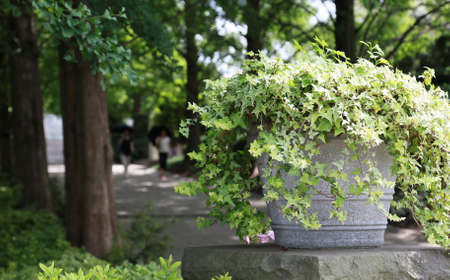1. The Rise of Biophilic Design in American Homes
In recent years, American homes have seen a surge in the popularity of biophilic design—a trend all about bringing nature indoors. But what exactly is biophilic design, and why has it captured the hearts of so many homeowners across the United States?
Understanding Biophilic Design
Biophilic design is an approach to interior decorating that seeks to connect people with nature by incorporating natural elements into indoor spaces. This goes beyond just adding a few houseplants; it’s about creating environments that mimic the calming and rejuvenating effects of the outdoors. From lush greenery to natural light and organic materials, biophilic design helps transform American living rooms, kitchens, and bedrooms into peaceful retreats.
The Roots and Cultural Significance
The word “biophilia” means “love of life or living systems.” In the U.S., this movement has roots in both environmental awareness and a cultural shift toward wellness. Many Americans are spending more time indoors than ever before, leading to a desire for spaces that reduce stress and improve well-being. Biophilic design answers this need by reestablishing our lost connection with nature—right inside our homes.
Why Are Americans Embracing This Trend?
| Reason | Description |
|---|---|
| Wellness Focus | People want healthier, more relaxing spaces at home. |
| Urban Living | Cities have less access to outdoor green spaces, so residents bring nature indoors. |
| Sustainability | There’s a growing interest in eco-friendly lifestyles and home décor choices. |
| Design Aesthetics | Natural textures and greenery add beauty and character to interiors. |
How Biophilic Design Shows Up in American Homes
You’ll spot this trend in lots of creative ways: hanging plants in sunny kitchens, living walls in trendy apartments, reclaimed wood furniture, large windows for sunlight, and even water features in living rooms. These design choices reflect a broader movement toward making homes feel like a sanctuary—where comfort meets the calming presence of nature.
2. Choosing the Right Indoor Plants for U.S. Climates
Why Regional Climate Matters for Indoor Plants
When bringing nature into your home, it’s important to pick indoor plants that thrive in your local climate. The United States covers a wide range of environments—from the dry Southwest to the humid Southeast—so what works in one region might not work well in another. Considering factors like humidity, sunlight, and maintenance will help you create a healthy indoor oasis that fits your lifestyle and local weather.
Popular Indoor Plants by U.S. Region
Different regions have unique indoor plant favorites. Here’s a simple guide to help you match plants with your area:
| Region | Common Climate Features | Recommended Plants | Care Tips |
|---|---|---|---|
| Northeast (NY, MA, PA) | Cool winters, moderate humidity, lower winter light | Pothos, Snake Plant, ZZ Plant, Peace Lily | Choose low-light plants; keep away from cold drafts; water less in winter |
| Southeast (FL, GA, NC) | Warm, humid, lots of sunlight | Bamboo Palm, Boston Fern, Philodendron, Spider Plant | Mist leaves to manage humidity; avoid direct hot sun; watch for mold |
| Midwest (IL, OH, MN) | Cold winters, variable sunlight, moderate humidity | Rubber Plant, Dracaena, Jade Plant, Aloe Vera | Use grow lights in winter; water when soil is dry; avoid overwatering |
| Southwest (AZ, NM, NV) | Hot and dry, lots of sunlight, low humidity | Cacti, Succulents, Yucca Plant, Ponytail Palm | Place near windows; let soil dry out completely between watering; minimal misting needed |
| Pacific Northwest (WA, OR) | Mild temperatures, high humidity, frequent cloudy days | Mosses, Ferns, Chinese Evergreen, Cast Iron Plant | Embrace shade-loving plants; allow for air circulation to prevent mildew; regular but light watering |
| California (CA) | Mild Mediterranean climate; coastal areas are humid while inland is drier | Fiddle Leaf Fig, Monstera, Bird of Paradise, Snake Plant | Avoid harsh direct sun inland; increase watering during dry periods; use pebble trays for humidity if needed |
Tips for Selecting and Placing Indoor Plants in Your Home
- Assess Your Light: Notice how much natural light your space gets throughout the day. South-facing windows usually get the most sun.
- Check Humidity Levels: Bathrooms and kitchens tend to be more humid—great spots for ferns and moisture-loving plants.
- Consider Maintenance: If you’re new to plant care or travel often, look for hardy varieties like snake plants or pothos that don’t need constant attention.
- Create Microclimates: Grouping plants together can help maintain higher humidity around them.
- Pots & Placement: Use pots with drainage holes and avoid placing sensitive plants near heating/cooling vents or drafty windows.

3. Creative Ways to Incorporate Plants into Your Living Space
Bringing nature inside is all about blending greenery with your unique home style. In American homes, where open layouts and cozy corners are common, there are tons of fun ways to use plants as both decor and natural mood boosters. Here are some creative ideas that fit right in with American lifestyles:
Hanging Planters for Modern Flair
Hanging planters are perfect for apartments, small spaces, or anyone looking to keep surfaces clutter-free. You can hang them by sunny windows, above kitchen counters, or even in the bathroom for a fresh vibe. Macramé plant hangers bring a boho touch, while sleek metal or ceramic options fit modern and farmhouse styles alike.
Plant Walls: A Living Statement Piece
If you want a bold look, try a vertical garden or plant wall. These living installations make great focal points in living rooms, entryways, or even home offices. They’re especially popular in urban homes where outdoor space is limited. Modular wall planters let you customize the size and plant selection—think trailing pothos, ferns, or succulents.
Centerpiece Arrangements for Any Room
A well-placed centerpiece brings life to dining tables, coffee tables, or kitchen islands. Choose low-maintenance plants like snake plants or peace lilies for busy families, or mix colorful blooms with greenery for special occasions. Try using vintage bowls, wooden trays, or glass terrariums for added character.
Quick Reference: Plant Display Ideas by Room
| Room | Best Plant Display | Style Tip |
|---|---|---|
| Living Room | Large potted floor plants (fiddle leaf fig) | Place near windows for drama and light |
| Kitchen | Herb garden on window sill | Grow fresh basil or mint within arm’s reach |
| Bedroom | Hanging planters or small succulents on nightstands | Add calming greens for better sleep vibes |
| Bathroom | Pothos or ferns on shelves | Choose humidity-loving varieties |
| Home Office | Tiny potted cacti or air plants on desk | Liven up your workspace without cluttering it |
Mixing and Matching Pots and Stands
The right container can really elevate your plant decor. Mix ceramic pots with woven baskets, or try mid-century modern stands for extra height and interest. Don’t be afraid to blend different textures and colors—this adds personality and helps your plant collection feel intentional.
Pro Tip: Rotating your plant displays seasonally keeps things feeling fresh and lets you experiment with new looks throughout the year!
If you’re just starting out, pick easy-care plants like pothos, spider plants, or ZZ plants. As you get more comfortable, try adding statement pieces like monstera or bird of paradise for that true “outdoor-in” feel.
4. Benefits of Indoor Plants: Health, Wellness, and Productivity
How Indoor Plants Support a Healthy Home Environment
Bringing plants into your living space is more than just a design trend—it’s a way to create a healthier and happier home. For many Americans now working from home, indoor plants offer proven benefits that go beyond aesthetics. Let’s break down how greenery can make a real difference in your daily life.
Physical Health Benefits
One of the biggest perks of indoor plants is their ability to improve air quality. Many popular houseplants filter out toxins like formaldehyde and benzene, which are often found in everyday household products. Plants also increase humidity, which can help with dry skin, allergies, and even respiratory issues—especially important during the dry winter months or in air-conditioned homes.
| Plant Type | Main Benefit |
|---|---|
| Spider Plant | Removes toxins & boosts oxygen levels |
| Peace Lily | Filters mold spores & VOCs |
| Aloe Vera | Cleans air & provides soothing gel for burns |
| Bamboo Palm | Increases humidity & removes chemicals |
Mental Wellness: Mood Boosters at Home
Indoor plants have been shown to reduce stress and anxiety. Their presence alone can create a calming atmosphere—a must-have for busy households or anyone juggling work-from-home duties. Taking care of plants also encourages mindfulness and gives you something positive to focus on during stressful days.
Quick Mood-Boosting Tips:
- Place a small plant on your desk for a daily dose of green during meetings.
- Create a cozy reading nook with leafy ferns or trailing pothos nearby.
- Add succulents to kitchen counters for a fresh look and easy care.
Boosting Focus and Productivity in Work-From-Home Setups
With more Americans working remotely than ever before, staying productive at home can be a challenge. Studies show that having plants in your workspace can sharpen focus, improve memory retention, and even boost creativity. The simple act of glancing at greenery has been linked to reduced mental fatigue—perfect for long Zoom calls or creative brainstorming sessions.
| Work-From-Home Struggle | Plant Solution |
|---|---|
| Lack of motivation | Add a bright flowering plant near your workspace for an instant pick-me-up. |
| Tired eyes from screens | Keep leafy greens in your line of sight to give your eyes a natural break. |
| Mental blocks or stress | Tend to your plants for five minutes to reset your mind. |
The Takeaway: Easy Green Upgrades for Every American Home
No matter the size of your home or apartment, incorporating indoor plants supports both physical health and mental well-being. Whether you’re decorating your first studio or upgrading your family room, adding greenery is one of the simplest ways to bring the outdoors in—and enjoy all the benefits right where you live and work.
5. Easy Care Tips for Thriving Indoor Greenery
Simple Watering Routines
Keeping your houseplants healthy doesnt have to be complicated. One of the most common mistakes is overwatering or underwatering. Most indoor plants do well with a “soak and dry” method—water thoroughly, then let the soil dry out before watering again. Stick your finger about an inch into the soil; if it feels dry, its time to water. Use pots with drainage holes to prevent soggy roots, which can lead to root rot.
Pest Prevention Made Simple
Pests like spider mites and fungus gnats can show up indoors, especially in American homes where heating and cooling systems create dry air. To keep bugs at bay, wipe down leaves with a damp cloth every couple of weeks and check for sticky residue or tiny webs. If you spot pests, a gentle spray of soapy water often does the trick without harsh chemicals.
Low-Maintenance Plant Recommendations
If you have a busy schedule, choosing easy-care species is key. These plants thrive with minimal fuss and are popular in American homes:
| Plant Name | Light Needs | Watering Frequency | Special Notes |
|---|---|---|---|
| Snake Plant (Sansevieria) | Low to Bright Indirect | Every 2-3 weeks | Tolerates low light and forgetful watering |
| Pothos (Epipremnum aureum) | Low to Medium Indirect | Once a week | Great for shelves or hanging baskets |
| Zee Zee Plant (Zamioculcas zamiifolia) | Low to Bright Indirect | Every 2-3 weeks | Drought tolerant; handles neglect well |
| Spider Plant (Chlorophytum comosum) | Bright Indirect | Once a week | Keeps air fresh and easy to propagate |
Quick Troubleshooting Tips
- Yellow Leaves: Usually means too much water—let the soil dry out more between watering.
- Crispy Brown Edges: Might be due to low humidity or not enough water—mist your plant or increase watering slightly.
- No New Growth: Try moving your plant closer to a window for more light.
A Little Effort Goes a Long Way
You don’t need a green thumb to enjoy indoor plants. A regular routine and choosing the right varieties for your lifestyle can transform any American home into a refreshing, biophilic retreat.


